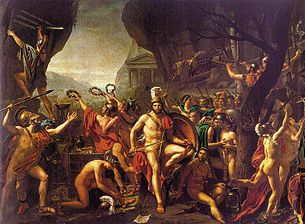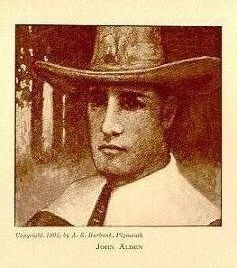 |
| Leonidas at Thermopylae, Jacques-Louis David, 1814 |
 |
| John the Apostle dictating, c 1100 |
 |
| Conquistadors praying before battle |
We found these kingdoms in such good order, and the said Incas governed them in such wise [manner] that throughout them there was not a thief, nor a vicious man, nor an adulteress, nor was a bad woman admitted among them, nor were there immoral people. The men had honest and useful occupations. The lands, forests, mines, pastures, houses and all kinds of products were regulated and distributed in such sort that each one knew his property without any other person seizing it or occupying it, nor were there law suits respecting it… the motive which obliges me to make this statement is the discharge of my conscience, as I find myself guilty. For we have destroyed by our evil example, the people who had such a government as was enjoyed by these natives. They were so free from the committal of crimes or excesses, as well men as women, that the Indian who had 100,000 pesos worth of gold or silver in his house, left it open merely placing a small stick against the door, as a sign that its master was out. With that, according to their custom, no one could enter or take anything that was there. When they saw that we put locks and keys on our doors, they supposed that it was from fear of them, that they might not kill us, but not because they believed that anyone would steal the property of another. So that when they found that we had thieves among us, and men who sought to make their daughters commit sin, they despised us.
 |
| Image: Mulher-Jornalagora |
 |
| Monument to Mary Allerton |
 |
| Image: Find A Grave |
 |
| Image: Genealogy Trails |
 |
| This portrait is said to be of Bellingham, but its subject and artist are both unknown. |
Keep on surviving,
Callie R.
No comments:
Post a Comment